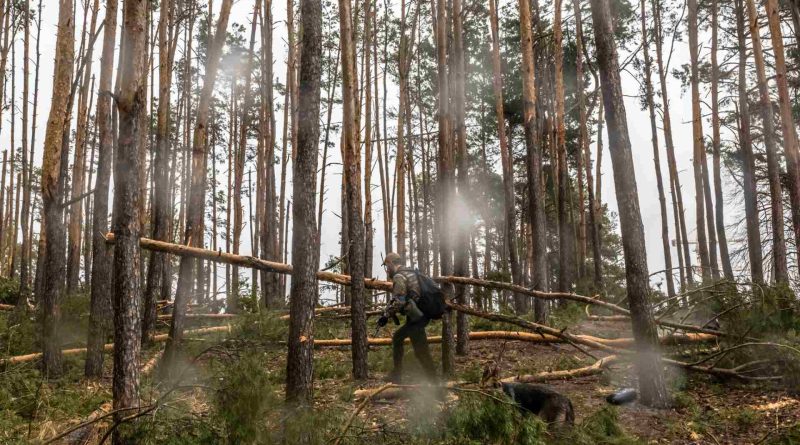Unveiling the Ecological Toll of Conflict: Ukraine’s Nature Pays the Price
In the aftermath of conflict, a meticulous examination seeks to shed light on environmental devastation, marking a potential shift towards accountability for ecological offenses.
From noxious fumes cloaking the skies to rivers tainted with toxins, and landscapes scarred by warfare’s wrath, the ecological aftermath of the Russia-Ukraine conflict has been meticulously documented in a newly unveiled map, challenging previous assumptions of immeasurable damage.
Ukrainian scientists, environmentalists, officials, and legal experts have embarked on a comprehensive investigation, aiming to establish a precedent by holding perpetrators accountable for environmental atrocities, with a compensation claim exceeding $50 billion.
The establishment of a dedicated hotline by the environment ministry allows citizens to report instances of Russian-induced “ecocide,” tallying over 2,300 cases to date, while weekly updates provide insights into the ongoing environmental crisis. Recent findings reveal:
- The need to mitigate the impact of over 320,000 explosive devices.
- Nearly one-third of Ukrainian territory, spanning 174,000 square kilometers, remains hazardous.
- A staggering 230,000 tons of scrap metal, remnants of destroyed military hardware, litter the landscape.
- Vital ecosystems, including 160 nature reserves and 16 wetlands, face imminent destruction.
- The proliferation of mines in the Black Sea poses threats to maritime traffic and marine life.
- With 600 animal species and 880 plant species on the brink of extinction, biodiversity hangs in the balance.
- Agricultural capabilities suffer, with one-third of land lying fallow or inaccessible for cultivation, and up to 40% of arable land rendered unusable.
Oleksandr Stavniychuk, Deputy Head of Environmental Control and Methodology, estimates the cumulative toll from pollution at a staggering $51.4 billion, underscoring the far-reaching ramifications.
Beyond its immediate implications, this concerted effort represents a multifaceted endeavor encompassing scientific inquiry, technological innovation, and legal advocacy, elevating the value of environmental preservation to unprecedented heights.
In what stands as perhaps the most comprehensive assessment of wartime environmental degradation to date, civil society, academia, and governmental bodies collaborate in an unprecedented display of collective intelligence.
Yet, amidst these endeavors, individuals like Kateryna Polyanska, a landscape ecologist, brave perilous conditions to document the devastation firsthand, underscoring the profound impact of conflict on nature.
Polyanska’s observations paint a stark picture: bomb-ravaged craters, charred landscapes, and irreplaceable ecosystems reduced to rubble, amplifying the urgency of rehabilitation efforts.
As legal proceedings unfold, Ukraine seeks redress through international forums, leveraging ecocide legislation and pressing for recognition of environmental crimes on a global scale.
Simultaneously, grassroots initiatives such as Ecoaction and Greenpeace mobilize to document ecological transgressions, harnessing technology to map and quantify the scope of devastation.
However, as the conflict rages on, the toll on both nature and humanity escalates, with industrial and agricultural interests exploiting the crisis to advocate for relaxed environmental regulations.
Amidst the chaos, voices like Yuliia Ovchynnykova’s resonate, calling for international solidarity in condemning Russia’s environmental atrocities and safeguarding Ukraine’s natural heritage.
As the war continues unabated, the imperative to reckon with its ecological fallout grows ever more pressing. In the words of Olena Maslyukivska, “Nature bears the silent burden of war,” underscoring the urgency of collective action to mitigate the ecological toll of conflict and pave the way for a greener, more sustainable future.

